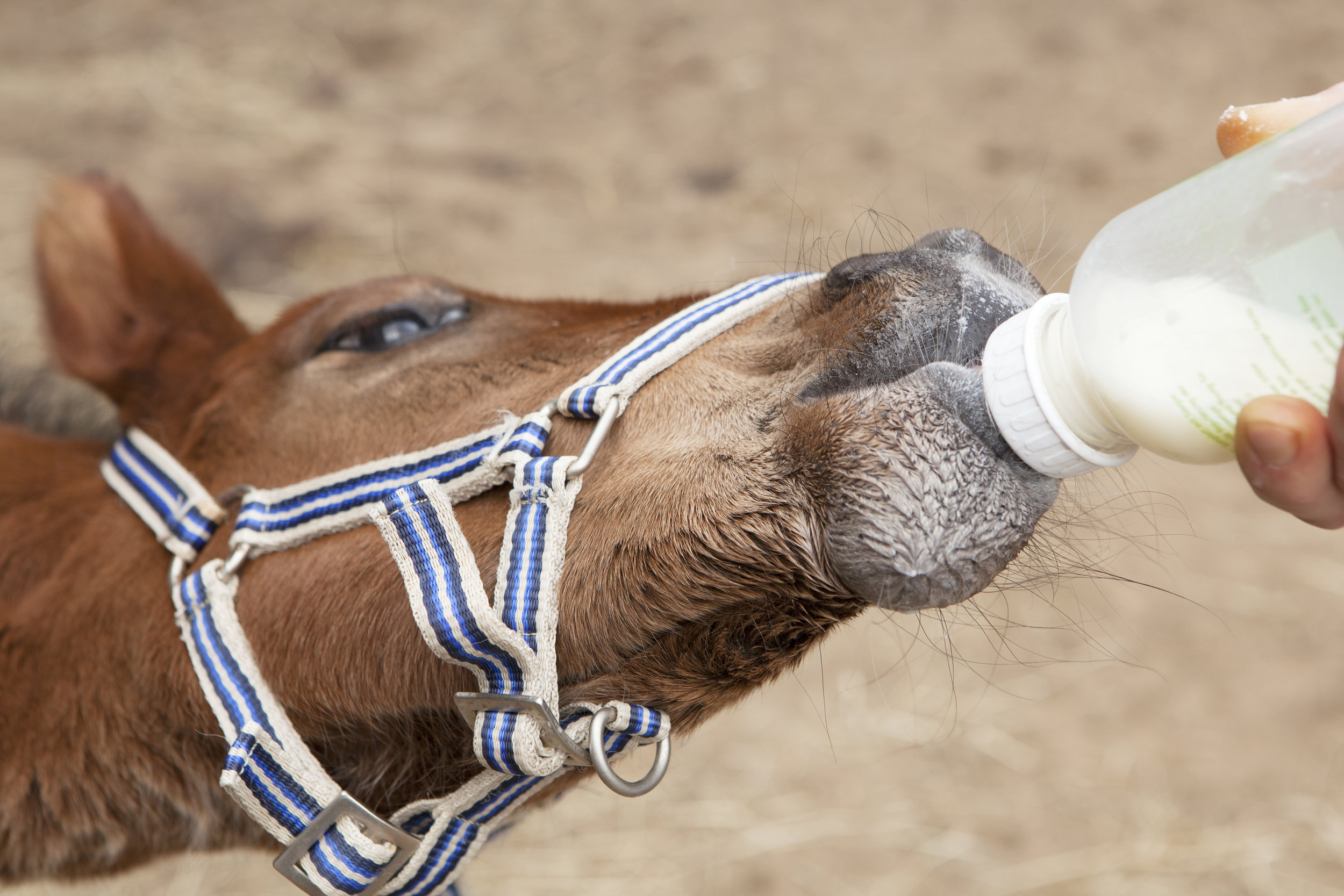THE IMPORTANCE OF COLOSTRUM
Birth - the incomparable, matchless magic! Such an amazing event. But it doesn’t always go as nature intended. One of the most common problems is when, for whatever reason, a foal doesn’t get enough colostrum. I well remember two such experiences – one with my own mare and the other, one of my patients.
I woke early one morning to my mare foaling. Everything unfolded beautifully and we excitedly watched this new baby emerge. But then disaster struck – my mare began colicking and rapidly succumbed to shock with pale gums, a racing heart - all signs of catastrophic internal haemorrhage – not easily treated in a paddock, we were racing against the clock. Attempts to treat my mare and collect colostrum for the foal were heart-breakingly unsuccessful and we were left with a dead mare and an orphan foal that had FPT – failure of passive transfer.
Foals are born with no immune protection and rely on colostrum, the first milk, rich in life-giving immunoglobulins that provide immediate protection against all manner of bacteria and viruses. The gut can only absorb these big proteins for a few hours – then the lining of the intestine changes and blocks large molecules from entering the body through the gut. Despite several hours of phone calls I couldn’t access any frozen colostrum and we had to rely on transfusions of plasma to deliver the vital immunoglobulins. Getting the plasma is not too hard – but to avoid potentially fatal reactions, the plasma must be cross-matched to ensure the donor has the same blood-type as the foal. Plasma only provides protection for up to a month (compared to 3-4 months protection from colostrum) and unless it’s from specially-vaccinated horses, it doesn’t cover many bugs. So multiple transfusions, twice daily monitoring of the foal’s body temperature and blood for signs of a developing infection and several courses of antibiotics later, he reached 6 months of age and at last his own immune system had matured. How much easier is it to not have failure or partial failure of passive transfer! Always have your vet test your foal’s immunity, ideally within 12 hours and certainly before 24 hours of age.
The other foal that had FPT was owned by a client whose mare had run milk for several days before foaling – but it wasn’t milk she was losing, it was the priceless golden colostrum. I tested the foal at 6 hours of age and its immunity was well below normal. Because the gut would soon lose the ability to absorb colostrum………..how many hours…………again and as so often occurs in equine practice, we were racing against time. With no studs nearby and few local breeders, what followed was hours of phone calls further and further afield, and at last we found a stud who could give us some frozen colostrum – but it was a 4 hour drive. At this stage the foal looked fantastic and had met all its milestones and was bright and alert. I sensed a reluctance in the owners to drive an 8 hour round trip and they asked …‘is it worth it’. If they had ever before experienced the consequences of FPT, the question would have never arisen. With little time to spare (colostrum absorption is most rapid at 3 hours of age, falling to almost zero by 20 hours of age) the frozen colostrum was collected. The important point with frozen colostrum is that to preserve the integrity and prevent degradation of the all-important immunoglobulin proteins, it must be thawed slowly – ideally over 6 hours at 22ºC. Again, time was against us so we divided the frozen colostrum into small amounts to hasten the room-temperature thawing. I tested the foal’s immunity at 18 and again at 24 hours of age. Much excitement as the test showed a perfect response!
FPT can occur for many reasons – some mares don’t produce enough, others produce poor quality colostrum or don’t have immunity to local bugs – a good reason to ensure the mare is at her foaling location at least a month before birth. Some foals are slower to suck and others appear to be suckling normally, but aren’t. Signs the foal is not suckling and swallowing – even though from a distance it seems to be spending appropriate time with its muzzle in the udder area – are milk on its face, an overfull udder or milk dripping from the udder. Everything is easier when it goes as designed by nature. If it doesn’t, think of how to meet natures needs and the windows of opportunity – to head off months of worry, cost and time.
EQUINE CLINICAL NUTRITION
Dr Jennifer Stewart


